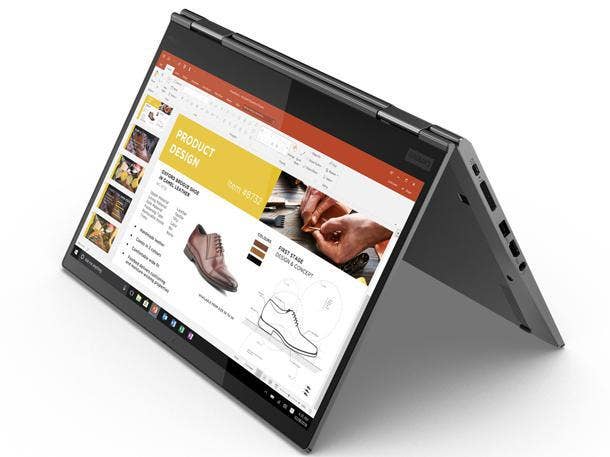CPU Shortages Hit The PC Market: 5 Things To Know
U.S. PC sales fell further during the first quarter of the year due to Intel’s processor shortage. Here’s how the biggest vendors fared.

While the PC market hasn't been a major source of growth for some time now, Intel's shortage of processor supply is making things significantly worse.
The first quarter of the year saw U.S. PC shipments decline for all of the major vendors, representing a bigger hit from CPU shortages than had been seen in the previous quarter, according to research firm Gartner.
[Related: PC Makers Hammered By CPU Shortages In Q1 2019]
What follows are five key things to know about how the U.S. PC market is faring amid Intel's CPU shortage.
The Slowdown Worsens
U.S. PC sales dropped 6.3 percent during the first quarter of 2019 compared with the same period a year earlier, Gartner reported. During the previous quarter sequentially—the fourth quarter of 2018—U.S. PC sales were not hit as hard. The fourth quarter saw a year-over-year drop of 4.5 percent, which also included an impact from the processor shortages.
That suggests that the impact from the CPU shortage has been worsening for PC makers, at least in terms of U.S. shipments.
Intel's CPU shortage has been impacting PC shipments since at least September. In the third quarter of last year, U.S. PC shipments were down just 0.4 percent from a year earlier.
The first quarter of this year saw U.S. PC shipment declines for all five of the top vendors—HP Inc., Dell, Lenovo, Apple and Microsoft. By contrast, during the fourth quarter of last year, two vendors grew their U.S. PC shipments. Lenovo had seen strong growth in U.S. PC shipments of 23.4 percent during the fourth quarter, while Dell had also seen growth, of 0.9 percent year over year.
Lenovo, Dell Hit Hardest In U.S.
The biggest change of fortunes in the U.S. PC market was at Lenovo, which saw its U.S. PC shipments fall by 7.5 percent in the first quarter, year over year—the largest drop among the five major PC makers. The slide came after Lenovo had seen surging growth over the past few quarters in U.S. PC shipments, with 23.4 percent growth in the fourth quarter and 22.2 percent growth in third-quarter 2018.
Marc Harrison, president of Manalapan, N.J.-based solution provider Silicon East, said his company has had a "very tough" time getting Lenovo PCs for customers in recent months. In particular, Harrison hasn’t been able to acquire Lenovo all-in-one PCs to fulfill an immediate need for a customer—and Silicon East does not sell competing PCs from HP Inc. or Dell.
While he understands that "the underlying cause is Intel," the situation is hurting business, Harrison told CRN.
Lenovo did not immediately respond to a request for comment.
In a recent interview with CRN, Matthew Zielinski, president for Lenovo's North America PC and Smart Devices business, said that "there's no doubt we left demand on the table in the first calendar quarter."
However, "I am becoming increasingly optimistic as the year goes on," Zielinski said. "I don't think we are in business as usual until maybe late calendar Q3, early calendar Q4, to be totally honest. But what I can also say is we're seeing some glimmers of hope. And to be honest I wouldn't have said that to you three or four weeks ago. For the first time I can say we see improvements."
Dell took nearly as big of a hit as Lenovo during the first quarter of the year in the U.S., with Dell's U.S. PC shipments dropping 7.1 percent from a year earlier, Gartner reported.
How The Other PC Makers Fared
Meanwhile, U.S. PC sales fell 4.7 percent for HP Inc., 3.5 percent for Apple and 2 percent for Microsoft.
"We saw the start of a rebound in PC shipments in mid-2018, but anticipation of a disruption by CPU shortages impacted all PC markets as vendors allocated to the higher-margin business and Chromebook segment," Gartner analyst Mikako Kitagawa said in a news release.
Market Share Holds Steady In U.S.
Market-share results remained largely static year over year, with small share gains by HP, Apple and Microsoft and minor drops for Dell and Lenovo, Gartner reported.
- HP Inc.: Market share of 29.4 percent, up from 28.9 percent a year earlier
- Dell: Market share of 28.7 percent, down from 28.9 percent a year earlier
- Lenovo: Market share of 13.6 percent, down from 13.7 percent a year earlier
- Apple: Market share of 13 percent, up from 12.6 percent a year earlier
- Microsoft: Market share of 4.1 percent, up from 3.9 percent a year earlier
Globally, the rankings differed during the first quarter, with Lenovo retaining the top spot—with 22.5 percent market share—followed by HP Inc. (21.9 percent), Dell (17.6 percent) and Apple (6.8 percent). Shipments fell 4.6 percent globally during the first quarter, Gartner reported.
AMD Capitalizes
Intel's commercial PC business was so good last year that it caught the semiconductor giant off-guard and contributed to its ongoing CPU shortage, Intel sales executive Steve Long told CRN previously. Unexpected demand in processors for PCs ended up contributing to the company's CPU shortage, said Long, head of sales for Intel's Client Computing Group.
"The first [overarching] thing is we undercalled demand, as an industry," Long told CRN last month.
Partially as a result, Intel rival AMD made gains in its latest financial quarter. AMD's fourth-quarter revenue was up 6 percent from the same period last year, with client CPU shipments growing by more than 50 percent year over year.
In its report, Gartner confirmed that AMD is capitalizing as an alternative CPU supplier to PC vendors. Leading vendors have begun "sourcing alternative CPUs from AMD," said Gartner’s Kitagawa in a news release.